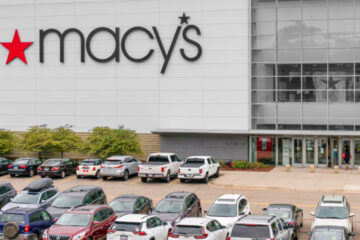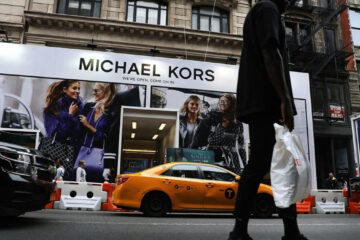A debate is raging among Americans over tariffs.
Those who oppose them argue that tariffs are mistakes that could lead to a collapse in consumer spending, triggering a recession. Others see tariffs as the perfect tool for restoring U.S. manufacturing dominance.
Ultimately, whether tariffs are good or bad may vary dramatically by industry. For example, it could be easier for technology companies, such as semiconductor makers, to onshore American production than paper and apparel manufacturers, given much of the latter’s previous infrastructure has long since been shuttered.
Regardless, most agree tariffs are inflationary and likely to crimp corporate profits, making them a potential threat to our already strained economy.
💵💰Don’t miss the move: Subscribe to TheStreet’s free daily newsletter 💰💵
The risk that tariffs may squeeze corporate profits caused the S&P 500 to tumble 4.6% in the first quarter, its worst showing since a 4.9% drop in 2022, which preceded a vicious bear market.
The tariff-driven sell-off could soon come to a head, though. President Trump will announce widespread tariffs on April 2, an event he’s referring to as “Liberation Day.”
Related: Jim Cramer offers blunt one-word reaction to 20% tariffs
The fact that Liberation Day may determine what happens to stocks next has caught the attention of veteran analyst Tom Lee of FundStrat. Lee has navigated the markets since the 1990s, correctly predicting the bear market bottom in 2023 and rally in 2024.
Given Lee’s past prescient predictions, investors may want to pay attention to his predictions about stocks’ performance after tariffs are revealed.
FundStrat’s Tom Lee unveiled a bullish outlook for what happens to stocks after President Trump’s ‘Liberation Day.’
The U.S. economy is at a precarious point
The Federal Reserve’s hawkish monetary policy in 2022 has arguably worked, given inflation has fallen below 3% from over 8% over the past nearly three years.
The most dramatic rate hikes since Fed Chairman Paul Volcker tackled inflation in the 1980s have come at a cost, though.
A corresponding dip in economic activity has contributed to layoffs, raising the unemployment rate to 4.1% from 3.5% as recently as 2023.
Related: Jamie Dimon sends curt 6-word response to tariff war
In February, 172,000 Americans lost their job, according to Challenger, Gray, & Christmas, the most for the month of February since we were mired in the Great Recession in 2009.
Increasing joblessness led the Federal Reserve to cut interest rates last September, November, and December to shore up GDP growth. However, those cuts have put the Fed in a tough spot because inflation has started to tick higher again. In February, the Consumer Price Index showed inflation of 2.8%, up from 2.4% last September.
Meanwhile, jobs have yet to stabilize given weekly jobless claims remain similar to last Fall and economic activity as measured by gross domestic product, or GDP, is waning.
So far, first-quarter economic data has the Atlanta Fed’s GDPNow forecasting GDP of negative 3.7%. Sure, that’s likely to change as more data comes in, but Q1 GDP will likely fall notably shy of the 3.1% pace recorded in the second and third quarters last year.
Tom Lee makes bold prediction about what happens to stocks next
Lee has been tracking the markets professionally for long enough to have experienced the Internet boom and bust, the Great Financial Crisis, and the Covid-drop.
His experience helped him accurately predict that the bear market would end in 2022, setting stocks up to rally in 2023. And while many were forecasting the S&P 500 would drop in 2024, he stuck to his bullish forecast, correctly predicting another strong year of gains.
Despite the risk of tariffs, Lee thinks the market could rally after “Liberation Day.”
More experts:
Treasury Secretary has blunt 3-word response to stock market dropFed chairman has blunt 9-word response to recession talkBillionaire Ray Dalio’s blunt message on economy turns heads
“How does President Trump want the stock market to react to Tariff day?” asked Lee in a video to FundStrat members. “There are six reasons why President Trump wants the stock market to rally after the tariff deals are announced.”
Those six reasons include:
Public validation of his tariff negotiationPublic support already waning as shown in voter approval, ISM Survey, consumer surveysStock market “crash” would lead to a recession. Average fiscal stimulus = 2.2% or $700 billion. Tariff likely drives shift to on-shoring: $6 trillion in future capex.US companies need “friendly” capital markets to fund moving PP&E to USAWill push for USA debt ratings upgrade to AAA?
Lee correctly points out that consumer confidence, a harbinger of past recessions, has tumbled.
The Conference Board’s Consumer Expectations Index is at 65, well below the 80 level that has signaled recession risk in the past. If a recession materializes, Lee thinks it would require nearly $700 billion in stimulus to get the economy going again, a hefty figure that could eliminate the benefits of tariffs.
“The US Government would have to spend $660 billion to come out of a recession, which is actually the actual expected annual tariff revenue,” said Lee. “It would kinda be an offset.”
Lee also believes that for reshoring to work because of tariffs, companies will need a willing equity and bond market to finance it. That’s unlikely in a recession.
As a result, Lee bluntly concludes, “Stocks should rally tomorrow after the close,” said Lee. “That’s what President Trump wants.”
Related: Veteran fund manager unveils eye-popping S&P 500 forecast


